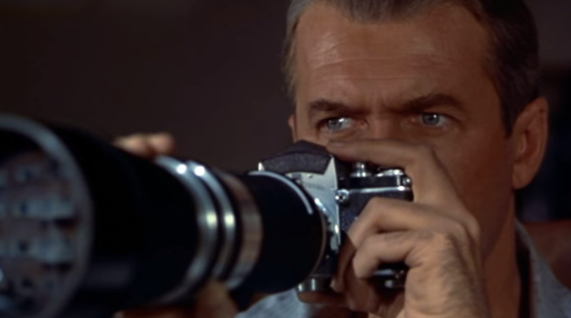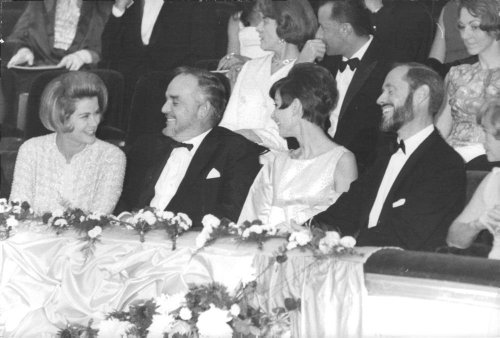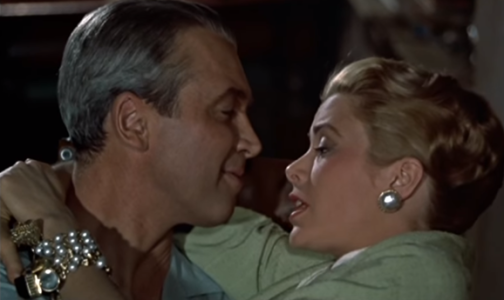
Well, it’s been 10 years and I still haven’t found it in my heart to choose another name for my blog. What I can say is that I’ve put a lot of passion into it and it’s been an edifying experience.
Not only have I watched a lot of films, grown as a writer, and met a lot of great people through comments and blogathons, but I feel like I’ve created something that I can be proud of. I don’t know what forms this blog will take or when it will take a hiatus (I still have quite a few posts in the tube), but it’s been such a good rhythm for me.
For the last 10 years of my life, I don’t think I’ve gone a week that I can remember without at least 1 blog posting. I’ve gone through transitions between platforms and designs, a few of my very earliest posts were republished, but for the most part, everything is timestamped as they came out.
But rather than dwell on that aspect, I think I’ve really gotten to see my own writing change as I grapple with films and topics that interest me and directors and performers who have garnered my utmost adulation and effusive praise.
The mission statement of the blog still remains fairly unwavering: to look deeper at the best classic movies as a community. I know I often falter and don’t always meet my goal, but I will continue to follow what interests me and hopefully, that will continue to highlight films that are interesting to others.
As a simple way to reflect on the past 10 years, I thought maybe I would try and take a post from each of the last 10 years as a small overview of where we’ve been and where we’re going. Here it is:

2012: My 25 Essential Movies
For some context, I got into classic movies back in 2010 after discovering TCM on a family vacation and coming upon AFI’s 2007 list of the 100 Top Movies of All Time. At that point, there was no blog, but I wanted to keep some kind of record of my viewing. So for a couple of years, I maintained spiral-bound notebooks of short, page-long reviews. They were filled mostly with plot summaries, typos, and my own curt brand of hubris. I gave Citizen Kane a very tepid review on first viewing. In My 25 Essential Movies, I tried to break out of my original form and layout my viewing criteria. It’s twee now, but this was also the beginning of my blog.
2013: UP (2009)
Looking through my early reviews, you’d probably be hard-pressed to find anything close to actual thought-out commentary or analysis. It was more so observational writing with a few personal comments in summation. Still, one of the longer reviews I was able to find was on UP, a film that still deeply moves me to this day. Pete Docter is a fine storyteller. That opening montage guts me every time. Russell, Dug, and Kevin are characters for the ages. There’s something bitter-sweet now that both Ed Asner and Christopher Plummer are gone. And there’s some solace in knowing that a sequel to this movie would never be conceivable. It stands alone as a phenomenal film.
2014: The Spectacular Now
This might seem like a really random film to highlight, but one of my foibles is that I truly enjoy a good coming of age film and regardless of what you think of the genre (or this film), I saw The Spectacular Now right at a time where it resonated deeply. In fact, when I’m not writing reviews, working a job, and taking care of my other personal responsibilities, I’ve dabbled in screenwriting. The Spectacular Now was one of the first movies/screenplays I ever read where I thought this is a world that I know and that I relate to. It will be interesting if it will stay with me as I grow older or if it was merely a milestone of my late teens. I wrote a more succinct review that I probably like better over at Film Inquiry.

2015: Crimson Kimono
I discovered Crimson Kimono in college and I essentially transcribed the essay I wrote for a film noir elective onto my blog. I would say my writing has probably grown, but the impetus behind this piece and the film is still something that stays with me. Because the images and the themes Sam Fuller trades in feel so relevant and totally ahead of their time. As someone who is a lover of Classic Hollywood, but also half-Japanese, some might take it for granted, but those two worlds rarely intertwine. Crimson Kimono is one of the most exhilarating exceptions with James Shigeta and Glenn Corbett walking the beats of Little Tokyo. More recently I wrote a piece highlighting Japanese-American culture in Classic Hollywood.
2016: Citizen Kane
My feelings about Citizen Kane have gone through several evolutions through the years. I mentioned already that it was so overblown as “The Greatest Move of All Time” in my nascent film brain that I was left mostly under-whelmed. Future viewings have elicited a less lackluster response and each subsequent reappraisal has made it grow in my esteem. Now it’s gone beyond a gargantuan tragicomedy, but also a cinematic expression of many of the themes in Ecclesiastes (everything is meaningless — a striving after the wind). But further still, it is a film that still surprised me with its ingenuity and technical prowess. I try not to think too much about how Orson Welles was only 25 years old when he made it. Being a genius does not always guarantee success. Far from it.

2017: Grace Kelly and Audrey Hepburn
I very rarely write these kinds of posts. Listicles and Actor Bios probably are a lot more delectable as evergreen content on the internet than some of my more gargantuan reviews; I simply enjoy the process of review-writing the most. Still, this post I did for The Wonderful World of Cinema’s Blogathon on Grace Kelly has remained one of my most persistently read pieces. It’s not much but it just goes to show the lasting gravitas and impact of Kelly and Audrey Hepburn. In considering them my two favorite classic Hollywood actresses, I found I am one of many. This appreciation started early on in my journey, and it continues to this day.

2018: Rear Window
It seems fitting to include a review of the movie I consider one of my personal favorites. I’m not sure if it’s one of my better reviews, but regardless, I got to speak about Rear Window in a way that seems to highlight it in a different way than merely bandying about the plot points and my reactions. It was meant to dig into the stylistic choices Hitchock used down to the very meticulous use of music and sound design not only in the execution of a taut thriller but also in distilling the film’s romance down to its very essence. I’m not sure if others see it this way (or even the Catholic Hitchock), but Rear Window is a reminder to me of what happens when the so-called Greatest Commandment to “Love Thy Neighbor” has gone heedlessly awry. I love this movie.
2019: Ad Astra
I’m fascinated by spiritual elements in movies and I was fond of how I was able to explore them in my review of Ad Astra using the motif of the essay, “The Seeing Eye.” I don’t always find unique ways to frame my analysis, but I like to think my writing gets more individual and enjoyable when I’m able to bring something to the movie that works in tandem and somehow builds upon the film in ways that I could not initially imagine. The Greek idea of ekphrastic (artistic description) writing intrigues me, and in some fractured form that’s what I tried to accomplish here to some small effect.

2020: National Classic Movie Day
Blogathons have been such a meaningful way to connect with other classic film enthusiasts while stirring up a wealth of activity on each other’s sites. I would be remiss if I didn’t mention The Classic Film and TV Cafe’s yearly blogathon that has become an annual enjoyment over the last few years. For 2020, I was able to put together a list of 6 of my favorite films of the 60s running the gamut, and I was quite happy with my choices and what I said about them because they are totally indicative of my own personal tastes. This is the kind of writing I appreciate the most.

2021: Paterson
I was a late arrival to Paterson, but it was one of those films I instantly connected with on some elemental level. I feel like my best reviews are conceived at the moment right after the film has ended and my head is full of all my myriad thoughts and strands of ideas. The images are still fresh in my mind’s eye and the emotions still coursing through my body. At times, it’s under this incubation where I’m able to write things that still resonate with me. Other days I hack out reviews strung out over a few days, and it’s more like an act of mechanized assembly, but there’s something freeing when it feels like you are totally in touch with your creative flow.

2022: In The Heat of The Night
If I remember correctly, Sidney Poitier and Sophia Loren are the last two giants living on AFIs Top 25 Stars List, and they have remained close friends over the years as I’ve worked through their filmographies to varying degrees. The passing of Mr. Poitier was sad, but it also provided ample space to celebrate his prominent legacy and so many facets of his life and career. I revisited some of his most renowned films and dipped into some new ones only to be pleasantly surprised. Including In The Heat of The Night here is less about the review and more so about what it represents. I felt the same way writing about Olivia De Havilland, Kirk Douglas, and Stanley Donen after their passing, just to name a few. The hope is to keep Mr. Poitier’s legacy alive and well. His films can do the rest as a supreme testament to the conduct of his character.
I definitely should not take this blog for granted, and I have been very thankful for the opportunities and experiences it has afforded me these last 10 years. Thank you to anyone and everyone who has ever taken the time to read even a few of my words!
Regards,
Tynan


































